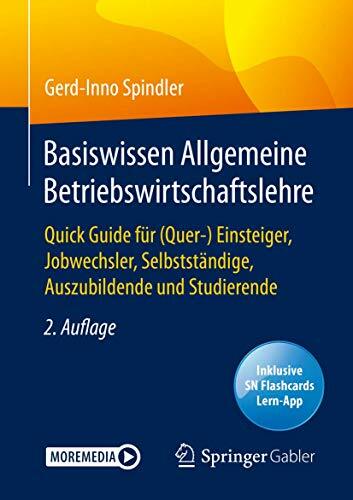
Process Guide for Students for Interdisciplinary Work in Computer Science/Informatics
Kurzinformation
inkl. MwSt. Versandinformationen
Artikel zZt. nicht lieferbar
Artikel zZt. nicht lieferbar

Beschreibung
The process of doing an academic work, whether a mini-project, diploma thesis, master¿s thesis or PhD thesis, requires systematic knowledge and skills in order to answer the following questions: ¿How do I find a topic?¿, ¿How do I obtain funding money?¿, ¿How do I write a project proposal?¿, ¿How is the organisatoric workflow?¿, ¿How do I search Literature systematically?¿, ¿Why should I read patents?¿, ¿How can I organize my references?¿, ¿Why English as a working language?¿, ¿What is the formal structure of a thesis like?¿, ¿What is the classical hypothetic-deductive research process?¿, ¿Which research methods could I use?¿, ¿How will my posters, my presentations and my written work be graded?¿, ¿How do I contribute to a conference?¿, ¿How do I contribute to an archival Journal?¿. These questions are discussed on the basis of the subjects Engineering (Computer Science/Informatics) and Natural Sciences (Psychology) and Business (Software Engineering/Business), which can be bridged by the subject ¿Human-Computer Interaction and Usability Engineering (HCI&UE). Since science is trans-cultural, inter-subjective and reproductive; these fundamentals can be further applied to almost any subject. Die Durchführung einer akademischen Arbeit, ob Mini-Projekt, Diplomarbeit, Masterarbeit oder Doktorarbeit erfordert systematische Kenntnisse und Fertigkeiten um folgende Fragen zu beantworten: ¿Wie finde ich ein Thema?¿, ¿Wie komme ich zu Förderungen?¿, ¿Wie verfasse ich einen Projektantrag?¿, ¿Wie läuft eine Arbeit organisatorisch ab?¿, ¿Wie führe ich eine systematische Literatursuche durch?¿, ¿Warum sollte ich Patente lesen?¿, Wie kann ich meine Literatur verwalten?¿, ¿Warum Englisch als Arbeitssprache?¿, ¿Wie ist der formale Aufbau einer Arbeit?¿, ¿Wie läuft der klassische Forschungsprozess ab?¿, ¿Welche Forschungsmethoden gibt es?¿, ¿Wie werden meine Poster, Vorträge und schriftlichen Arbeiten beurteilt?¿, ¿Wie verfasse ich einen Konferenzbeitrag?¿, ¿Wie verfasse ich einen Beitrag zu einer wissenschaftlichen Zeitschrift?¿. Diese Fragen werden exemplarisch an Hand von Ingenieurswissenschaften (Informatik) und Naturwissenschaften (Psychologie) und Wirtschaft (Software Engineering/Business) besprochen, deren Brücke das Fach ¿Human-Computer Interaction und Usability Engineering¿ darstellt. Da Wissenschaft transkulturell, intersubjektiv und reproduzierbar sein soll, lassen sich die Prinzipien aber auch auf andere Gebiete übertragen. von Holzinger, Andreas
Produktdetails

So garantieren wir Dir zu jeder Zeit Premiumqualität.
Über den Autor
Head of the Research Unit Human-Computer Interaction (hci4all.at), Institute for Medical Informatics, Statistics and Documentation, Medical University Graz; Assoc. Prof. for Informatics at the Institute of Information Systems and Computer Media, Faculty of Computer Science and Lecturer at the Institute of Genomics and Bioinformatics, Faculty of Electrical and Information Engineering, Graz University of Technology; Andreas was Visiting Professor in Berlin, Innsbruck, Vienna, London and Aachen. Since 1999 participation in leading positions in 30+ multinational research and development projects with a budget of 3+ MEUR; 300+ publications, 2600+ citations, h index = 25, g Index = 56, (08/2012). Motto: Science is to test ideas ¿ Engineering is to put these ideas into practice.

- paperback
- 332 Seiten
- Erschienen 2013
- SAGE Publications Inc

- Hardcover -
- Erschienen 2012
- De Gruyter Oldenbourg

- Hardcover
- 464 Seiten
- Erschienen 2020
- John Wiley & Sons Inc

- Hardcover
- 456 Seiten
- Erschienen 2009
- Addison Wesley ein Imprint ...

- paperback
- 544 Seiten
- Erschienen 2015
- Shaker

- Gebunden
- 595 Seiten
- Erschienen 2016
- Wiley-VCH

- Taschenbuch
- 416 Seiten
- Westermann Schulbuchverlag

- Hardcover
- 660 Seiten
- Erschienen 2023
- Springer Vieweg

- Gebunden
- 408 Seiten
- Erschienen 2012
- De Gruyter Oldenbourg

- Kartoniert
- 136 Seiten
- Erschienen 2022
- Westermann Bildungsmedien V...

- Kartoniert
- 416 Seiten
- Erschienen 2022
- Westermann Schulbuchverlag

- Gebunden
- 752 Seiten
- Erschienen 2022
- Westermann Schulbuchverlag

- Kartoniert
- 324 Seiten
- Erschienen 2020
- Springer Gabler

- Kartoniert
- 411 Seiten
- Erschienen 2022
- Springer Vieweg

- hardcover
- 2752 Seiten
- Erschienen 2004
- Chapman & Hall/CRC

- paperback
- 378 Seiten
- Erschienen 2025
- Europa-Lehrmittel

- Kartoniert
- 336 Seiten
- Erschienen 2009
- Springer

- Kartoniert
- 685 Seiten
- Erschienen 2022
- Europa-Lehrmittel


























